If you own a business, chances are pretty good that you will enter into a commercial lease at some time during the life of that business. While each lease is different and must be reviewed carefully, commercial leases typically cover a core group of issues. If you are looking at leasing commercial property for your business, you need to have at least a basic understanding of these issues that are at the heart of most every commercial lease. Following, then, are a partial list and brief explanation of some of the most pressing issues addressed in a commercial lease.
1. What space are you leasing?
A commercial lease should clearly define the space that the tenant will be leasing, also known as the “demised premises.” Leases typically include both a street address and a site plan showing the demised premises, and set for the square footage of the demised premises. Make sure the lease clearly defines the demised premises, and that the demised premises described in the lease matches the demised premises you are expecting to receive. Also, make sure that your demised premises has sufficient parking spaces and sign rights to allow you to operate your business.
2. Is this a gross lease or a net lease?
A commercial lease should tell you what is included in the rental amount that you pay the landlord. Most leases are gross leases, triple net leases, or fall somewhere in between. Unfortunately, not all leases will state explicitly into which category they fall, so you need to read the lease carefully. A gross lease typically is all-inclusive, meaning that the tenant pays the landlord one sum and the landlord is responsible for payment of real estate taxes, insurance and maintenance expenses. Tenant utilities may or may not be included within a gross lease. In a triple net lease, the tenant pays a set rental amount to the landlord, but also pays a share of the landlord’s real estate taxes, insurance, maintenance expenses, and building utilities. Understanding the difference between a gross and triple net lease is particularly important when comparing multiple spaces because it helps to ensure you are comparing apples to apples.
3. How is my rental rate determined?
A commercial lease should clearly define what your rental rate will be for the entire term of the lease. Generally, this is done through a rental chart which states the annual rental rate for each year of the lease and what the tenant’s equal monthly payments will be based on the corresponding annual rate. In most leases, the annual rental rate increases from year to year either by a flat amount (say, 2.5%) or by reference to an exterior formula (say, in proportion to increases in the cost of living allowance). In some retail leases, the tenant is responsible for paying the annual rental amount plus a percentage of the tenant’s sales for the year, which is known as percentage rent.
4. What is included in your CAM?
A triple net commercial lease should state the amount, if any, the tenant must contribute toward “common area maintenance” expenses, or CAM. Often, CAM includes costs of snow removal, security, parking attendants, building maintenance, building management fees, etc. The simplest method for determining a tenant’s share of CAM is to divide the number of square feet in the tenant’s space by the total number of rentable square feet in the office building or shopping center. Of course, commercial leases do not always handle things in the simplest manner, so CAM allocation should be reviewed carefully.
5. What can you do in your demised premises?
A commercial lease likely will tell you what you can and cannot do in your demised premises. Office leases often state that the space will be used for general office use and for no other purpose. Retail spaces often get more specific. Further, you need to know whether your lease includes an “exclusive,” which is a provision that gives you the exclusive right to operate your type of business in the building or shopping center. Exclusives are the reason that you rarely see competing pizza places in the same shopping center.
6. When it breaks, who fixes it?
A commercial lease should clearly define who is responsible for repairs of the demised premises, the building, the parking lot and the core building systems (plumbing, electric, HVAC, etc.). Keep in mind that the question here is not who pays for the repairs, but who is responsible for making sure the repairs are made in the first place. Commercial tenants often maintain the demised premises and any core building systems to the extent they are located within the demised premises, while the landlord maintains everything else.
7. Will there be a build-out and, if so, who pays for it?
Commercial space tends to be rather generic and may require modifications, or a “build-out”, for use by a particular tenant. Accordingly, a commercial lease often states whether the landlord or the tenant will make improvements to the demised premises to get ready for the tenant’s occupancy. When the landlord pays for the improvements, the amount spent by the landlord is called an “allowance.” If improvements are contemplated, the lease must clearly state what improvements will be made, who will complete the improvements, when the improvements will be complete, and the amount of any allowance.
The foregoing list should provide some guidance when reviewing your commercial lease, but the list is by no means exhaustive. Commercial leases typically deal with a host of other issues as well, including the length of the lease, tenant extension or renewal, the tenant’s ability to assign the lease or sublet the demised premises, what constitutes a default and what remedies are available for a default, tenant insurance obligations, environmental contamination, etc. These are all important issues and must be reviewed carefully and understood by the tenant.
If you have a leasing question, or for more information, please contact Jon Siebers of Smith Haughey Rice & Roegge at (616) 458-5298 or jsiebers@shrr.com.







